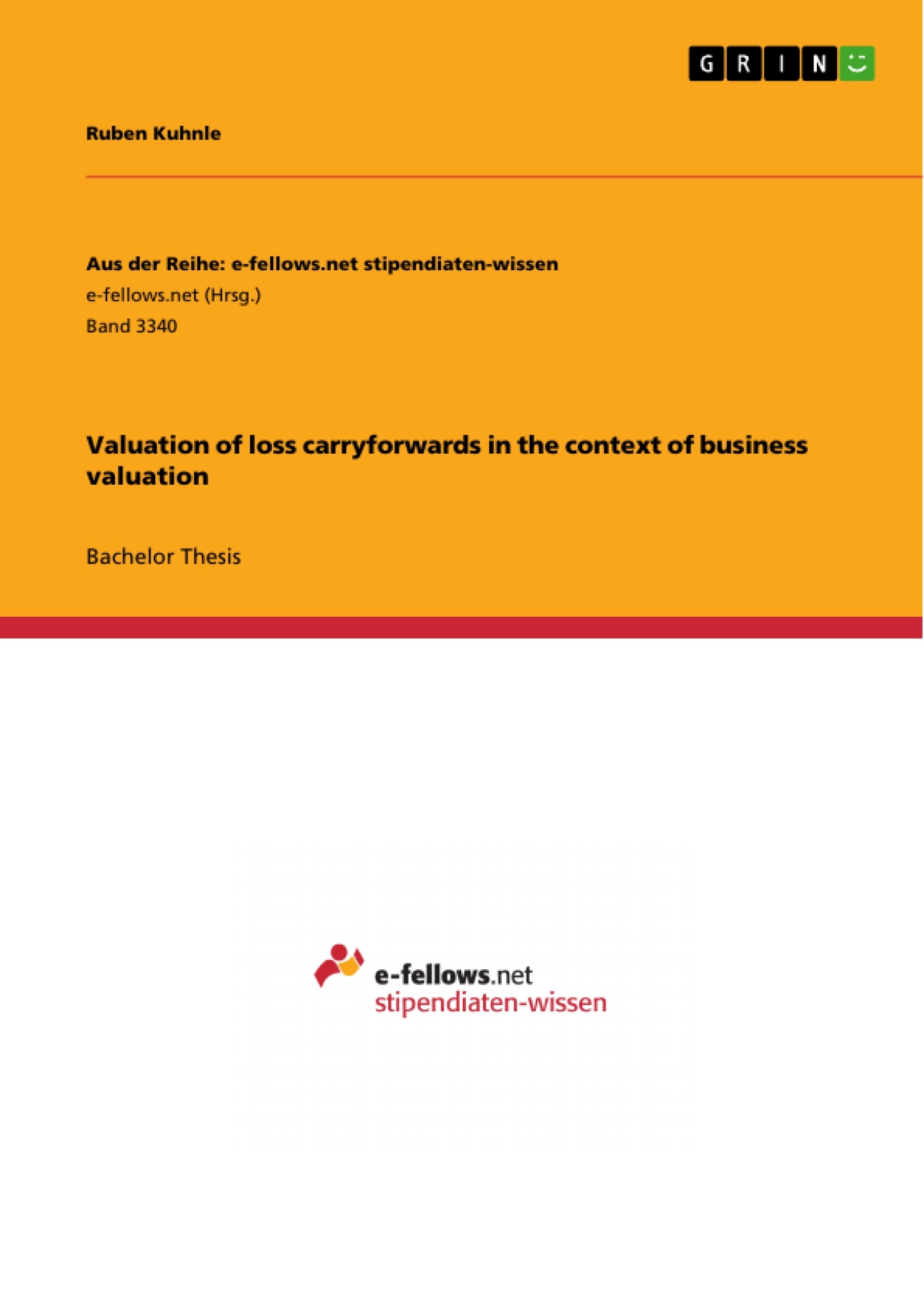This thesis concentrates on the Discounted Cash Flow (DCF) analysis. More specifically, it is worked with the Weighted-average Cost of Capital (WACC) method, the Adjusted Present Value (APV) method, and the Flow-to-Equity method . In addition, the focus is on tax loss carryforwards and the problem of how to incorporate the valuation of them into a DCF framework. Generally, two approaches are accepted for valuing loss carryforwards. One can either indirectly or directly determine the value of loss carryforwards.
The thesis starts by explaining the fundamentals of business valuation and how the three DCF methods work. After that, a literature review is presented. The purpose of the literature review is to show the strategies others have developed to value loss carryforwards correctly. To show how to incorporate the valuation of loss carryforwards into a DCF framework, an example case was designed that involves two identical companies. The WACC method, the APV method, and the Flow-to-Equity method are applied and combined with the direct, as well as, the indirect method. When the results of the direct method are compared with the results of the indirect method for each one of the three DCF methods, it is concluded which of these approaches works, and gives a correct solution, and which one does not.
Inhaltsverzeichnis (Table of Contents)
- Introduction
- Valuation of loss carryforwards
- Fundamentals of business valuation
- Literature review
- DCF valuation methods
- The WACC method
- The APV method
- The Flow-to-Equity method
- Example case
- Assumptions and simplifications
- The indirect method
- The WACC method
- The APV method
- The Flow-to-Equity method
- The direct method
- The WACC method
- The APV method
- The Flow-to-Equity method
- Interpretation of the results
- Conclusion
Zielsetzung und Themenschwerpunkte (Objectives and Key Themes)
This bachelor thesis examines the valuation of loss carryforwards in the context of business valuation. The study aims to provide a comprehensive analysis of the theoretical framework for incorporating loss carryforwards into valuation models, and to demonstrate the practical application of different valuation methods by applying them to a specific case study.
- Valuation of loss carryforwards
- Discounted cash flow (DCF) valuation methods
- Application of valuation methods in a case study
- Impact of loss carryforwards on business valuation
- Comparison of different valuation methodologies
Zusammenfassung der Kapitel (Chapter Summaries)
- Chapter 1 provides an introduction to the topic of loss carryforwards and their importance in business valuation.
- Chapter 2 delves into the fundamentals of business valuation, outlining key concepts and theories. It also examines existing literature related to the valuation of loss carryforwards.
- Chapter 3 discusses various DCF valuation methods commonly used in practice. This includes a detailed explanation of the WACC method, the APV method, and the Flow-to-Equity method.
- Chapter 4 presents a case study that demonstrates the practical application of the valuation methods outlined in Chapter 3. It showcases how the different methods are applied to a hypothetical company with loss carryforwards, considering both direct and indirect approaches.
Schlüsselwörter (Keywords)
The key themes and concepts covered in this thesis include: Business Valuation, Loss Carryforwards, Discounted Cash Flow (DCF) Methods, Weighted Average Cost of Capital (WACC), Adjusted Present Value (APV), Flow-to-Equity, Case Study, and Valuation Methodology.
- Quote paper
- Ruben Kuhnle (Author), 2019, Valuation of loss carryforwards in the context of business valuation, Munich, GRIN Verlag, https://www.grin.com/document/512988




